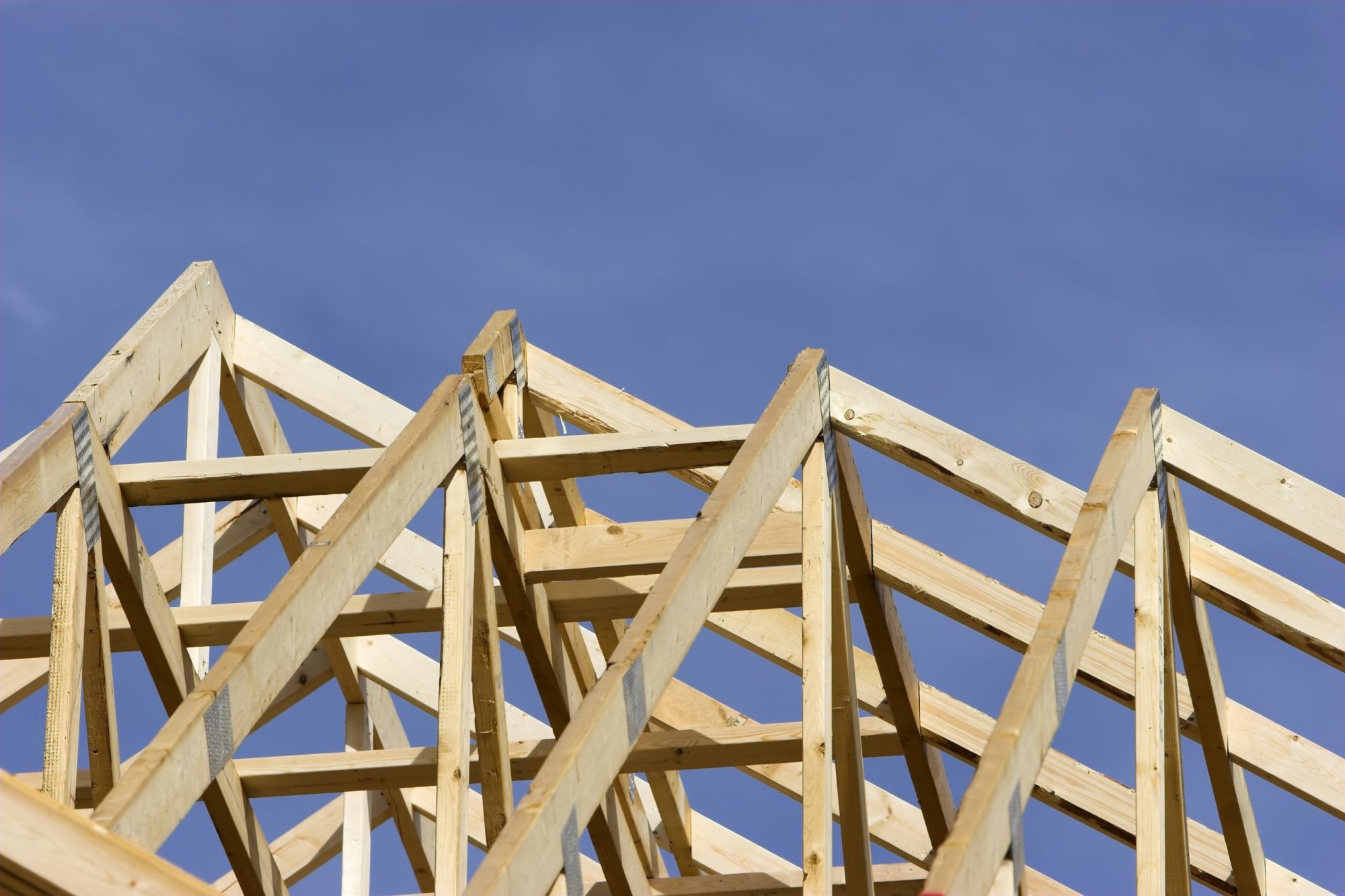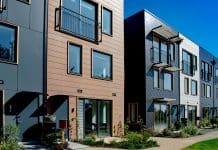PBC Today sat down with Andrew Orriss, Chief Operating Officer at STA, to discuss his pathway into sustainable construction, the Building Safety Act, and how the STA are broadening the knowledge and appeal of timber frames in construction
With a background in sales and marketing and experience in zero-carbon and sustainable construction, Andrew Orriss is working with the STA as their Assurance Director to manage and develop their STA quality assurance scheme.
Is timber construction a sector that you’d always envisioned yourself in?

Yes and no. I suppose the truth is, I spent most of my work in life in insulation products, and that was really about the conservation of energy for buildings in use. I found myself running a structural insulated panel business in Coventry for seven years, which is where I started to look at timber and construction in general.
Prior to then, I worked in the insulation industry and was committed to the whole idea of building better buildings, using suitable materials, using less energy, and futureproofing buildings. The risk was the increased cost of heating homes in an inflationary market, which, unbeknownst to me at the time, is clear now in the world in which we live.
My first introduction to working in the SIPs and timber industry was running the Structural Insulated Panel business. It was there I recognised that the use of timber and construction when you’re looking at it from energy conservation and climate change seemed to make logical sense to me.
Working in timber construction is something I didn’t envisage from an early age but having got into the construction industry and moving through it, I’m very pleased about being part of the timber industry. It’s a great place to be, and there are some good people in it.
As you know, timber is an essential material for offsite construction. But for the people who are reading this who are less familiar with timber in construction, why is it so effective?
There are several reasons. The first one is the speed of construction using a timber frame. You can quite often take weeks off the program for building dwellings using timber frames.
It also addresses some of the pressures on skill shortages in the industry, particularly in bricklaying. For example, you can alleviate quite a lot of the time on-site for bricklayers by using timber frames. It’s a tried and tested solution that has been around for around a long time.
We just didn’t call it offsite construction in 1980, in those days it was just timber frame. So being tried and tested, the industry is well versed in producing good quality products, and we have an extensive amount of technical data to support the use of timber frames in construction.
STA has its own STA Assure program that all members are mandated to be a part of. It’s effectively an audit program to ensure competency within its membership, so we can say with confidence that by using an STA member you are assured of adherence to high standards and quality. Warranty providers such as Premier Guarantee and NHBC endorse STA Assure and recognize that they’re engaging with an organization that has quality and competency programs in place.
The final advantage is the carbon agenda. Switching to timber in construction is very beneficial for reducing carbon because it is naturally carbon neutral. When trees grow, they suck up carbon and store it, and when you chop a tree down, the carbon is locked in. There is a common misconception that the structural timber industry is responsible for deforestation; however, the trees that are used to make structural timber are all farmed.
I think it might be worth mentioning as well that the trees that we use to make structural timber systems are farmed. A common misbelief that exists is the idea that the structural timber industry is laying bare hundreds and hundreds of square miles of land and deforesting it. That’s not the case at all – typically, we plant five trees for every one that’s chopped down.
In fact, we’re increasing the number of trees absorbing in carbon by using timber frames. Many major housebuilders such as Barratt Homes and Taylor Wimpey have reverse-integrated their businesses into manufacturing timber frames to take advantage of many of the inherent benefits.
Those organizations represent a large percentage of all the homes built in the UK, and they’ve got a very strong ambition in setting up their own timber frame businesses to use more timber in construction. I think if there was a clearer endorsement that it’s the right material for the right application, those businesses don’t invest this kind of money lightly.
You briefly mentioned the STA Assure program, but what other things are the STA doing to broaden the knowledge and appeal of timber frames in construction?
As an industry, we are recognizing lots of new interest in this technology that wasn’t there before.
It’s important that the trade body representing that industry responds to demand. Therefore, last year we changed our website- which used to be simply an information portal for membership -to a much more external-facing website to talk about timber construction and provide individuals and businesses new to this environment with what they need to know.
We also restructured our business. Therefore, we are now working closely with the Government on a program called ‘Timber in Construction’, in response to the Government’s Net Zero 2050 document that clearly stated they want to find ways of using more timber in construction safely.
We’re also in the process of opening our technical library for anybody to access. This was previously for members-only, so we’re opening that up to anybody that’s interested. Over 100 technical documents about using timber in construction will be available to download.
We’re also providing a good deal of membership support for skills and training to allow those businesses to expand with market demand and have competent workforces within their own organizations. That’s just a small snapshot of the things that we’re doing in response to the increased demand for timber construction.
How do the new Building Safety Regulations impact the market for structural timber, and how can timber manufacturers comply?
The Building Safety Act mainly addresses high-rise residential buildings, and structural timber is not commonly used in those applications. So, in real terms, the Building Safety Act has a minor impact on structural timber.
Most of the structural timber used in the UK is in low-rise single-family dwellings and consequently, is not particularly a focus of the Building Safety Act. However, we have been watching this quite closely and we have recognized that many of our members doing volume house building have applied certain aspects of the Safety Act to their own businesses and a natural improvement in the service they provide..
I’m referring particularly to what Dame Judith Hackett called ‘The Golden Thread’ which is the traceability of information of materials provided on-site. There is a lot more use of things like digital photography of buildings, timber frames, et cetera under construction to demonstrate that the building was constructed as per the design.
There are pockets of the Building Safety Act that members have adopted because it makes good business sense and their customers are asking for it as well, in many cases.
What testing is in place to ensure that timber frames meet the new standards?
A lot, so buckle up! Back in 2019, the STA undertook an extensive program of fire testing. The purpose of doing that wasn’t to find out whether what we were providing the industry was a safe building system but to provide demonstrable evidence that we were. Standard timber frame styles have undergone testing to confirm 30-60 minutes of fire resistance, depending on the regulatory requirements of the building.
We undertook that program in 2019 and continue to do so, producing an open source of information.
Fire Research Volume One is a full explanation of all the different timber frame systems that have undergone testing and how they performed and exactly how they were constructed.
In addition to that, there’s another volume that we’re about to publish that demonstrates all the other testing that’s been undertaken by our members. There are many members that hold their own test data and as such, we would like to publish those to provide a record of this and illustrate what happened.
This complies with the necessary requirements to create a very extensive portfolio of tested solutions. We always thought that this was something that the industry should undertake.
Therefore, the STA created a program on how you protect buildings, which was endorsed by the Fire Service and various insurance organizations, called The STA 16 Steps to Fire Safety.
Because of that, this now appears in contractual obligations with our members and their clients to abide by the 16-step rule when building a timber frame building in an urban area where there’s a risk to other buildings if there was a fire.
There’s another technology within structural timber and it’s called mass timber systems. You may see these fabulous buildings with these great big, timber beams in them – quite often commercial buildings and that material behaves slightly differently. That sector of our industry has undertaken a half-a-million euro testing program that is about to be completed.
Ultimately, it provides demonstratable evidence to say that we have the science behind it, and we have the tested proof to go with it. It also allows us to speak with confidence in terms of how you would build a timber frame building for a single-family home or a large commercial building a school, for example, where in certain places you might like to see the timber as a feature of that design and construction.
We believe that it is important that there is demonstrable evidence to back up our claims and avoid the cynics around who would say, “Well, you would say that anyway, wouldn’t you?”
Are there any future projects in the pipeline for the STA that you can share?
There are two big projects that we have in store.
In line with working closely with the Government on the Timber in Construction program, there is a huge project that we’re working on which started last year and is exciting. The aim is to ensure we increase the use of timber in construction, safely and to alleviate any fears about the sufficient supply of timber. That’s probably the biggest show in town for us at the moment.
And the second project is our continued fire testing program, showing all the different permutations of how you can build using timber frames and structural insulated panels.
I just think that’s strong for the industry, it’s strong for the end user and it’s strong for their customers as well.

















